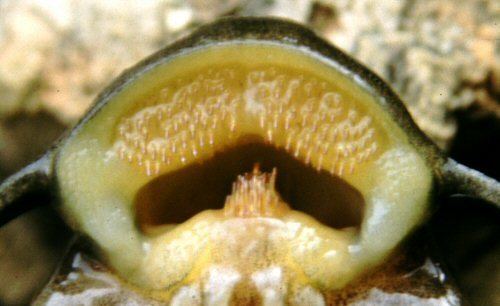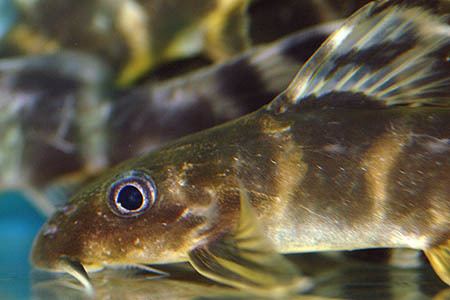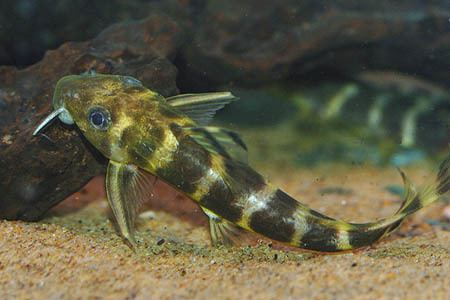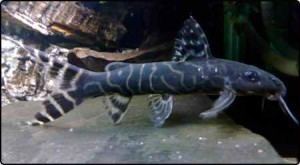Higher classification Synodontis | Scientific name Synodontis brichardi Rank Species | |
 | ||
Similar Synodontis, Catfish, Synodontis flavitaeniatus, Synodontis alberti, Synodontis angelicus | ||
Congo tank with synodontis brichardi
Synodontis brichardi, known as Brichard's Synodontis, is a species of upside-down catfish that is endemic to the Democratic Republic of the Congo where it occurs in the rapids of the lower Congo River. It was first described by Max Poll in 1959. The original specimens were obtained from the rapids at Kinsuka, Kinshaa, Zaire. The species name brichardi is named in honor of Pierre Brichard, an aquarium fish exporter who first discovered the fish.
Contents
- Congo tank with synodontis brichardi
- Synodontis brichardi synodontis petricola neolamprologus tretocephalus placidochromis phenochilus
- Description
- Habitat and behavior
- References

Synodontis brichardi synodontis petricola neolamprologus tretocephalus placidochromis phenochilus
Description

Like all members of the Synodontis genus, S. brichardi has a strong, bony head capsule that extends back as far as the first spine of the dorsal fin. The head contains a distinct narrow, bony, external protrusion called a humeral process. The fish has three pairs of barbels. The maxillary barbels are on located on the upper jaw, and two pairs of mandibular barbels are on the lower jaw. The adipose fin is large and the tail, or caudal fin, is forked.

The front edges of the dorsal fins and the pectoral fins are hardened into stiff spines. These spines can be raised into position at right angles to the body and locked into position for defensive purposes. The ability to lock the spines into place comes from several small bones attached to the spine, and once raised, the spines cannot be folded down by exerting pressure on the tip.

The fish has a structure called a premaxillary toothpad, which is located on the very front of the upper jaw of the mouth. This structure contains several rows of short, chisel-shaped teeth. On the lower jaw, or mandible, the teeth are attached to flexible, stalk-like structures and described as "s-shaped" or "hooked".

The maximum standard length of the species is 15 centimeters (5.9 in). Generally, females in the Synodontis genus tend to be slightly larger than males of the same age.
Habitat and behavior

In the wild, the species occurs in the lower Congo River rapids. As a whole, species of Synodontis are omnivores, consuming insect larvae, algae, gastropods, bivalves, sponges, crustaceans, and the eggs of other fishes. The reproductive habits of most of the species of Synodontis are not known, beyond some instances of obtaining egg counts from gravid females. Spawning likely occurs during the flooding season between July and October, and pairs swim in unison during spawning. The growth rate is rapid in the first year, then slows down as the fish age.
